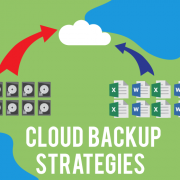There are a number of misconceptions associated with open source software. Here are some facts to distinguish reality from fiction:
Open Source Software is always Free
It is one of the greatest misconceptions that open source software are available for free of cost. Virtual Machine Manager, Joomla and 7-Zip are a few software that do not require you to pay; however, all open source software are not free.
Open source software is basically a program that permits people to change its source code. In other words, people can select a program and add or remove features to meet their business requirements.
Open source licenses verify whether users have paid an amount to use program or not. For instance, Linux distro Ubuntu is linked with General Public License GNU that permits to use, share or modify software freely. On the other hand, distro Red Hat Commercial Enterprise Linux make use of freeware licenses; however, it confines free use through trademark rights. Red Hat charges for updates and closed binary modules, whereas source code is available freely for rebuilds and tweaks.Open Source Software is Inferior Quality
Quality and security of software cannot be measured through license flexibility. Internet Explorer and Microsoft Windows are closed source software, but these have been targeted by hackers. It is ridiculous to think that Android has open source therefore it is more vulnerable to hack than iPhone.
Bugs are also one of the common issues in closed source software. However, only the developer of that closed source program can work on fixing any of the bugs. On the other hand, open source software can count on its worldwide developers’ community to zip away the bugs and come up with an improved and mature product.Open Source Software is weakly Supported
Usually, vendors include the cost of technical support and online customer service in product’s price. Commercial program, such as PhotoShop provides resources for premium support. Open alternatives, such as GIMP offer only community support in forums.
Open source support is usually given critical reviews and seems to have bad reputation. However, open source software, such as WordPress, and its plugins and themes, are updated on regular basis to cover security patches. Some open source software such as Hadoop come with enterprise features. Hadoop’s support is as equal or better than commercial solutions.Open Source Software is Public Domain
Public domain and open source are two different names; and they mean different. In reality, public domain software has no copyrights and restrictions like Creative Commons and UnLicense. Some public domain software examples include: Blast, I2P, SQLite. Open source software is restricted. License explains how application should be used, redistributed and modified.
Knowing the difference between open source and public domain will help you avoid expensive legal issues while sharing or packaging up software.Open Source Software is Unreliable
It is natural that customers get a quality product when they pay for it; therefore, free software is believed as unreliable in nature. Fact is open source software is designed with reliability and get tested by thousands of the community members. Popular web applications, such as Apache Web Server, BIND, and PHP are open source. Apaches HTTP server supports popular websites, Wikipedia, PayPal and Apple.







Leave a Reply
Want to join the discussion?Feel free to contribute!